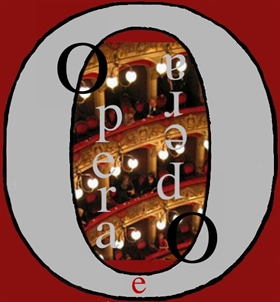By Natalia Di Bartolo – On display in Saint-Sulpice. The Italian-French artist stands out for the originality and elegance of his monumental works.
Frédérico Alagna, an Italian-French artist, has always been a multifaceted creator. Known for his "Bimbolini", which he made an icon of tenderness and grace, in the most varied shapes, materials and dimensions, he is a sculptor, draftsman, painter, brilliant creator of "monumental installations" and musician.

His artistic activity was enriched, on 9 December 2022, with the exhibition of a monumental "Mystical Triptych", in an event in which one of his "Ave Maria" in Latin and the "Rejouis-toi Marie" were also performed in French, original music on the two sacred texts, in the context of an organ, choral and soloist concert, directed by M° Hugues Renier.
The event took place in’ Église Saint-Sulpice, historic and famous church, in the center of Paris, located in the square of the same name, in the VI arrondissement, the second largest church in the French capital after the cathedral of Notre-Dame.

In recent years, the art of Frédérico Alagna, also known as "Fradelrico", has turned more and more towards the sacred, with which his entire poetics are strongly imbued, in all its forms.
What we intend to underline most here is the uninterrupted and inspired creativity of Frédérico Alagna, who uses little, even deliberately "poor" materials to implement his art, but who always hits the mark. His expressive simplicity is not banality, but weighted reflection, listening and meditation, profound religiosity and prayer. The artist's production is imbued with a sincere and heartfelt mysticism, his simplicity is linearity and elegance.

The three large canvases exhibited in the Parisian church, mounted on a particular pedestal that kept them appropriately angled, were characterized by three crucifixes on a white background, with black and gold strokes. Below, in the center of the pedestal, a blue field, which in the author's intent symbolized water and, with it, the sacrament of Baptism.
The Crucifix, together with the effigy of the Madonna, is a recurring theme in the art of Alagna, declined in infinite versions and always fully emanating its religious, symbolic and mystical meaning.

Generous donors, since the event was free to enter, helped to complete the aesthetics of the installation, because a small red candle with a candle was linked to each donation. These candlesticks, arranged on the ground on the left, in good order, in front of the triptych, contributed with their color and the burning of the flames to complete the suggestion of the work of art.

The triptych was installed in the first chapel on the right of the large church, part dedicated to the Holy Angels, which houses three pieces of large-scale mural paintings by Eugène Delacroix, who were commissioned in 1849 and painted between 1855 and 1861: on on the right wall there is Jacob fighting with the angel, on the left the Expulsion of Heliodorus from the Temple and on the vault the Archangel Michael defeating the devil; the first two scenes are painted in oil and wax directly on the wall, while the third is on canvas applied with the marouflage technique.
All this means great painting, movement, masterly color, and obviously, deference towards such a great artist with whom to bring his very modern production into contact. Therefore the white essentiality of the three canvases stood out admirably in an unprecedented combination of great aesthetic taste, as well as a profound and heartfelt symbolic meaning.

As he usually does on the occasion of his artistic events, Frédérico Alagna had also prepared small prints, available to the public, always with a sacred theme in declination to the subject of the triptych, and he himself got to work at the request of enthusiasts who crowded the church, drawing some of his famous "Bimbolini".

His innate simplicity, almost monastic, saw him sitting on the floor, in the chapel, in front of his work throughout the evening, throughout the concert.

The original event, as a whole, took place in a climate of interest and heartfelt religiosity, in a successful evening, crowded with an applauding audience and many art enthusiasts and connoisseurs.
Natalia Di Bartolo ©
PHOTO CREDITS Christiane M. Lefoulon, Karine Winsz, David Boussalem, Nicolas Lebon, AA.VV.

